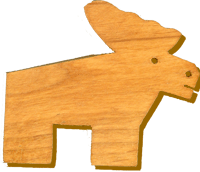 |
 |
Lists of Common Tags
Really Basic Tags
<html></html> <head></head> <body></body> <title></title> |
The tags typically coded by an authoring program like DreamWeaver defining the entire HTML document, the head and body portion and defing the title of the document. The <title> tag is found in the <head>. |
<strong></strong> or <b></b> <em></em> or <i></i> <p></p> <br /> <hr /> <h1></h1>...<h6></h6> <center></center> <blockquote></blockquote> <table><tr><td></td></tr></table> <ol><li></li></ol> or <ul><li></li></ul> |
These tags format the text with bold or italic, with a new paragraph, a break to the next line or a visible line. The <h1>...<h6> define the size of the heading with <h1> being the largest and <h6> being the smallest; they also create new paragraphs. <center> is intuitive and <blockquote> indents the paragraph. <table> requires <tr> (table row) and <td> (table cell, literally table data). <table is very functional for decribing the format of a webpage. <ol> and <ul> create ordered and unordered list with list items (<li>). |
<a> <img> |
These two insert links and images with a basic format such as <a href="http://www.wou.ed">Text</a> and <img src="images/moose.jpg" /> |
<area /> <map></map> <form></form> <input></input> <frame></frame> <iframe></iframe> |
These tags define linkable areas on images, define forms for inputing information and defining locations within the webpages where information may be inserted. These are more advanced tags. |
<!--...--> <!DOCTYPE> <script></script> <style></style> |
These two tags allow for comments for humans which the browser will not read and defines the HTML document type. |
For a more complete with additional details, visit the web at sites such as w3schools.com.
Copyright Denvy Saxowsky 2012 - saxowsd at wou.edu